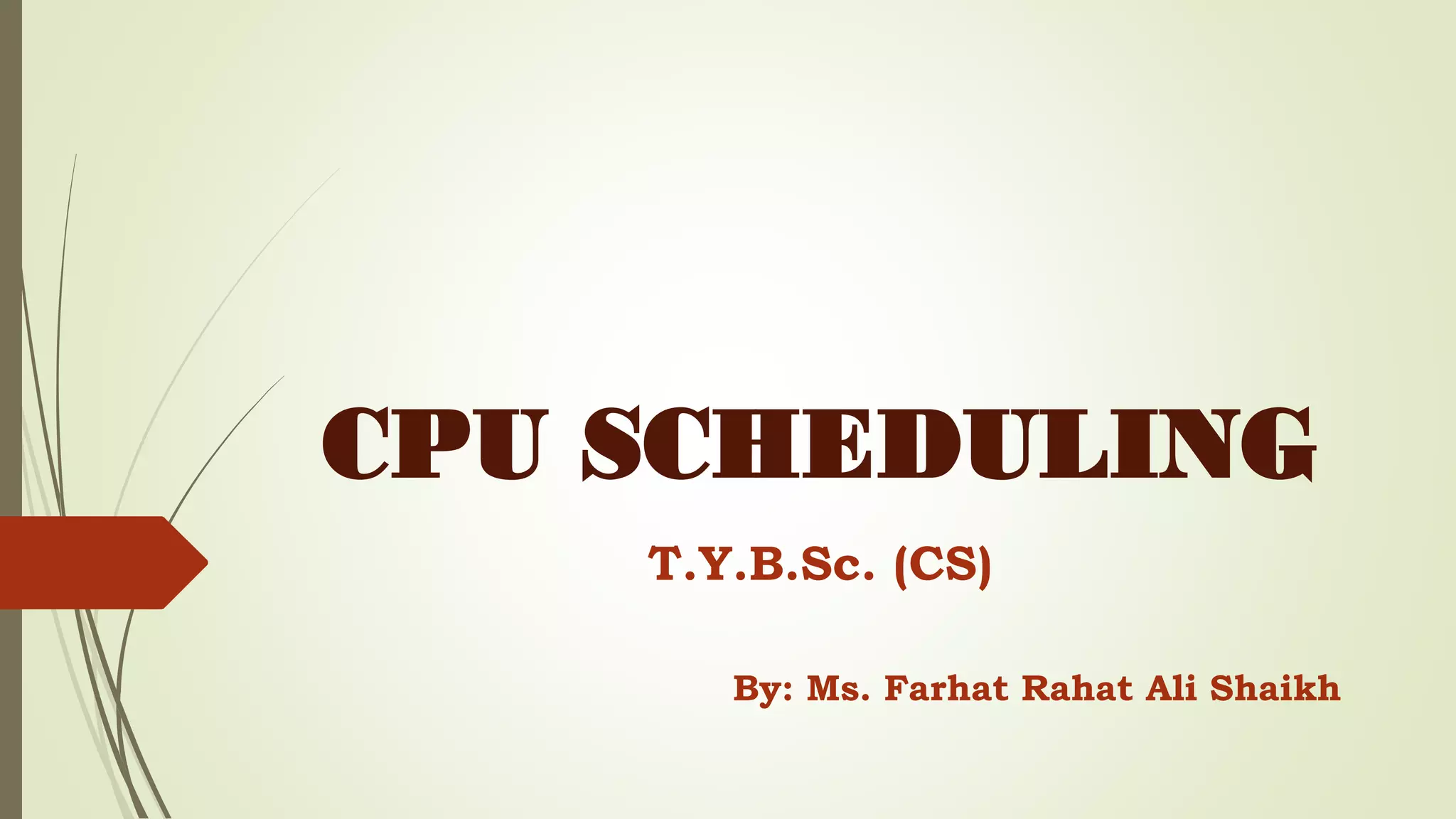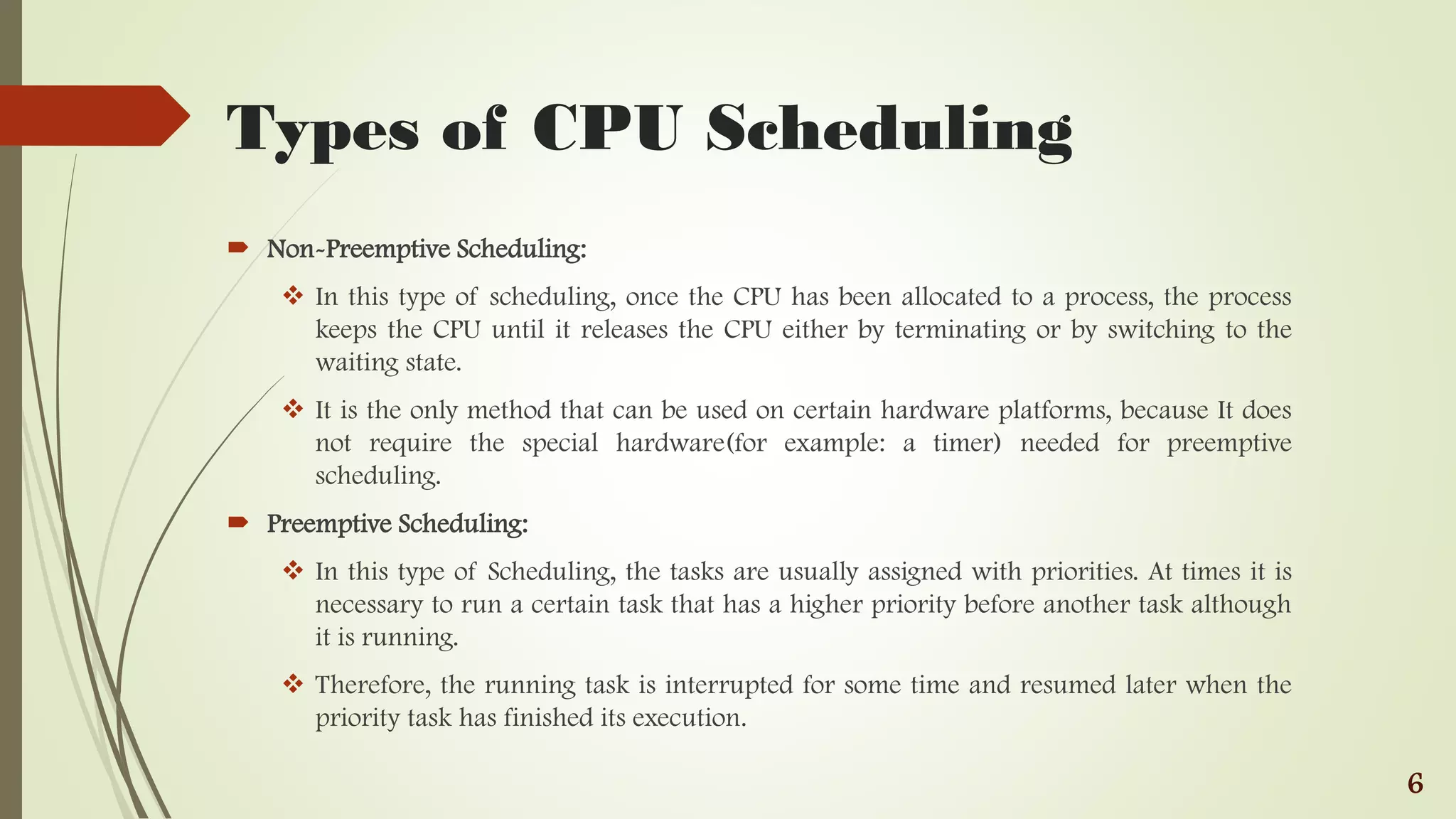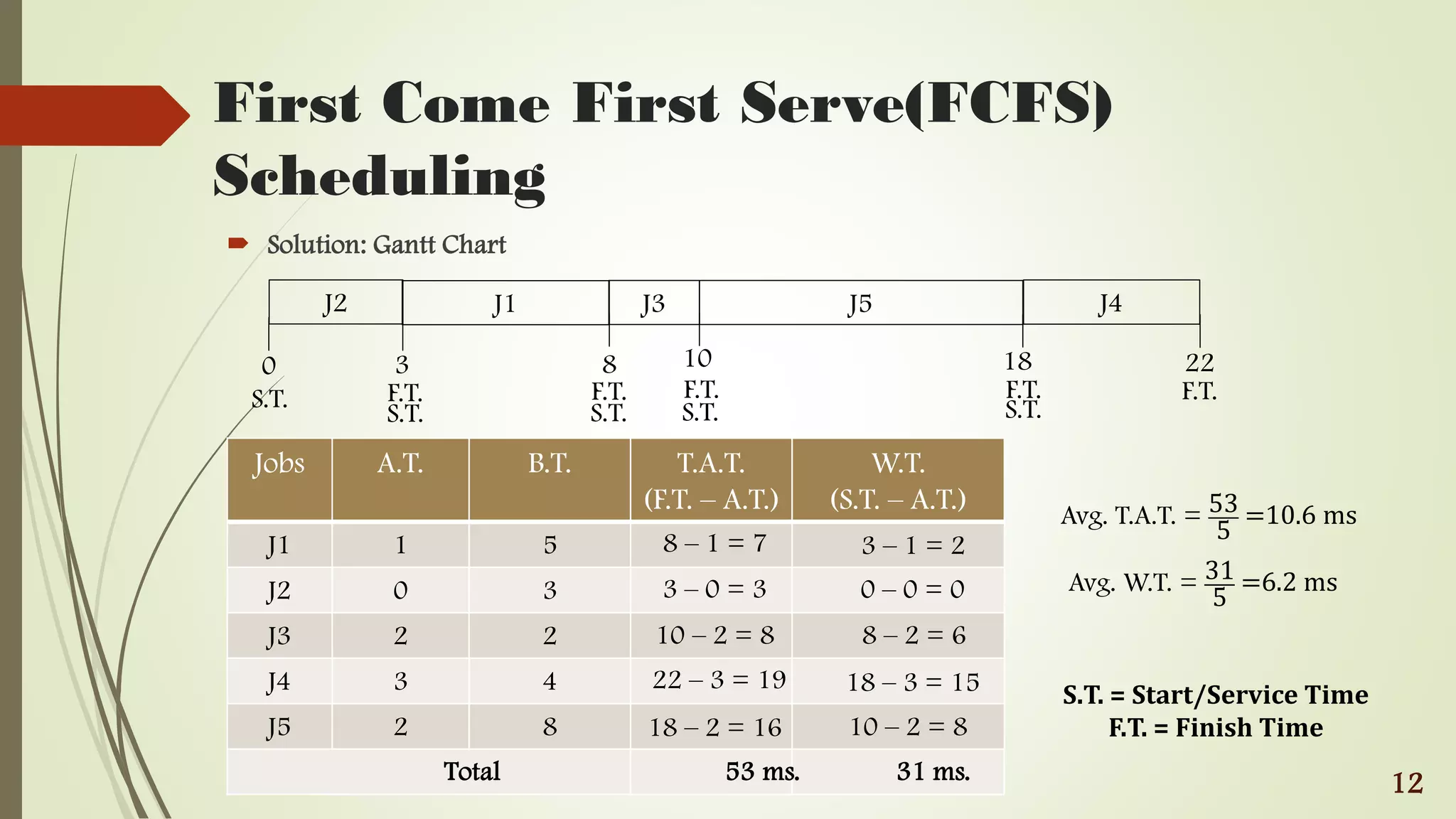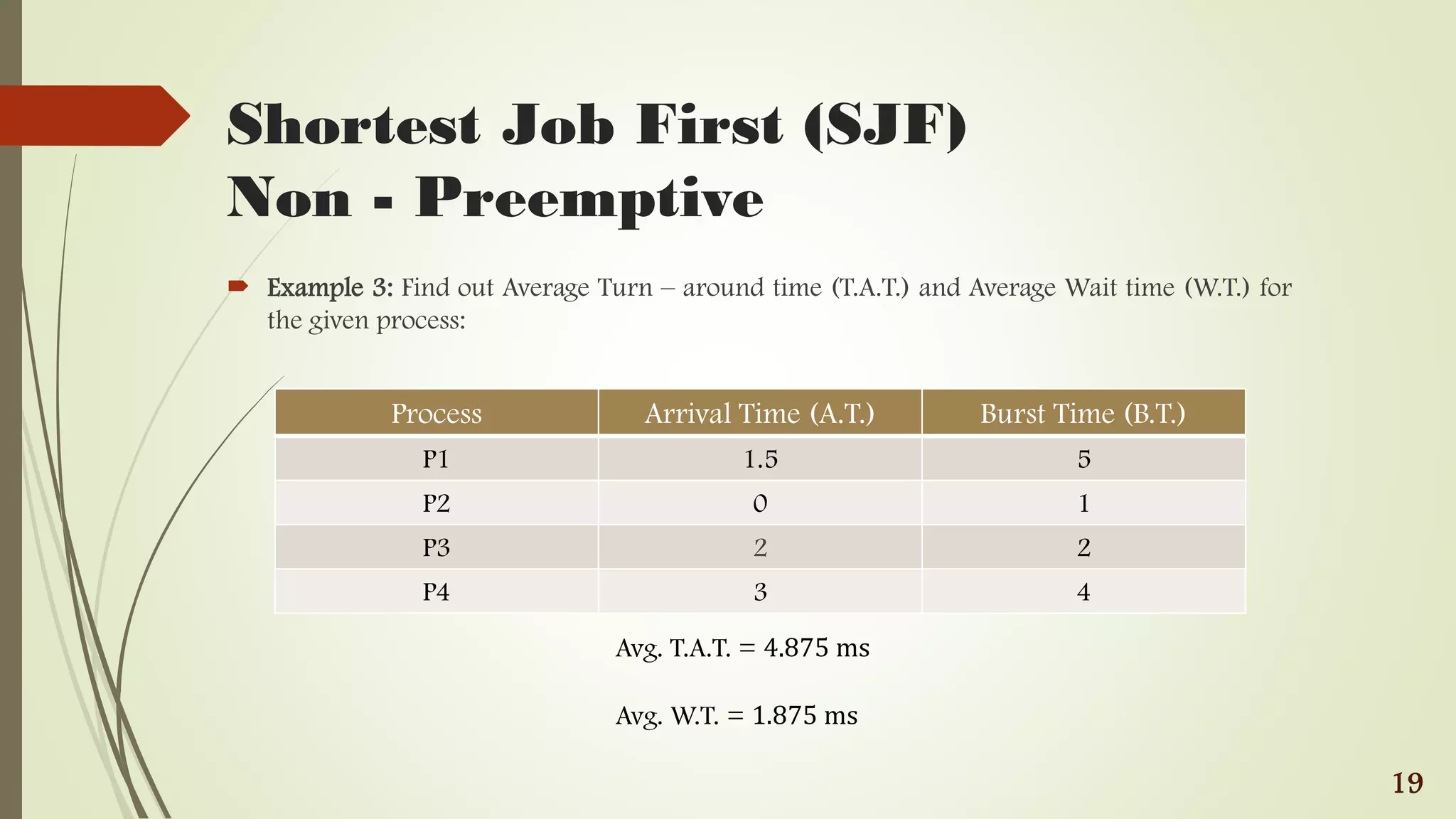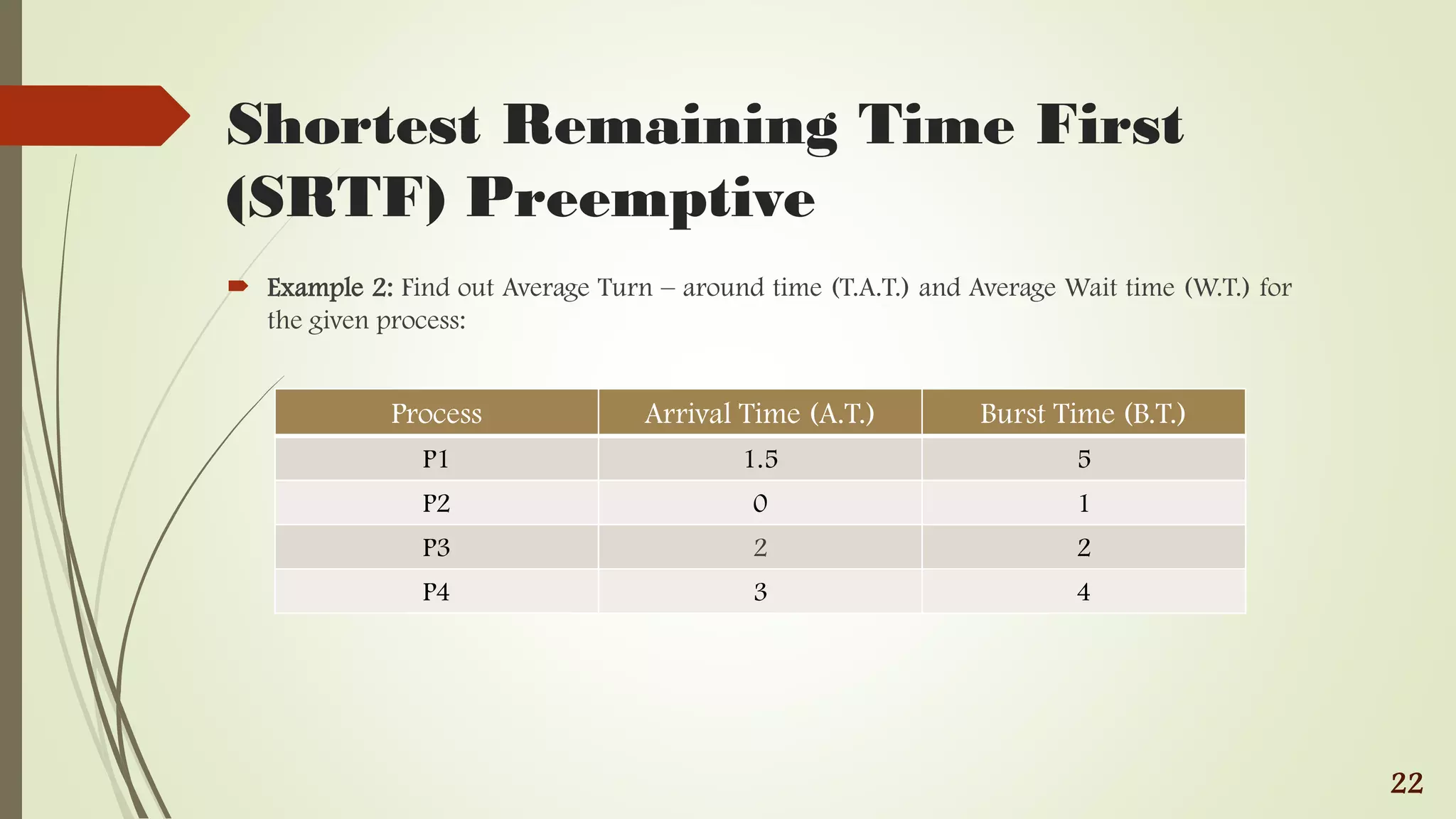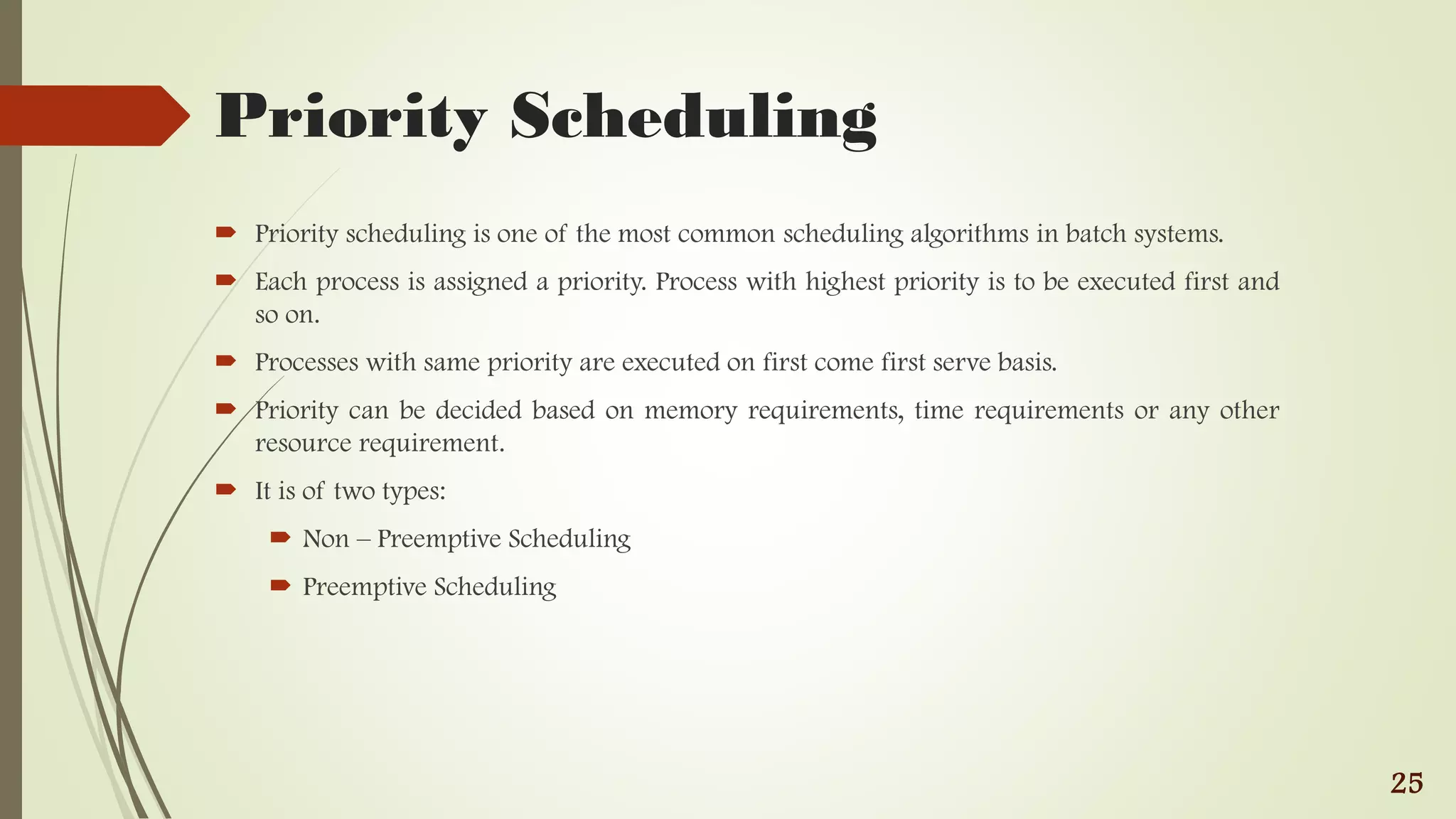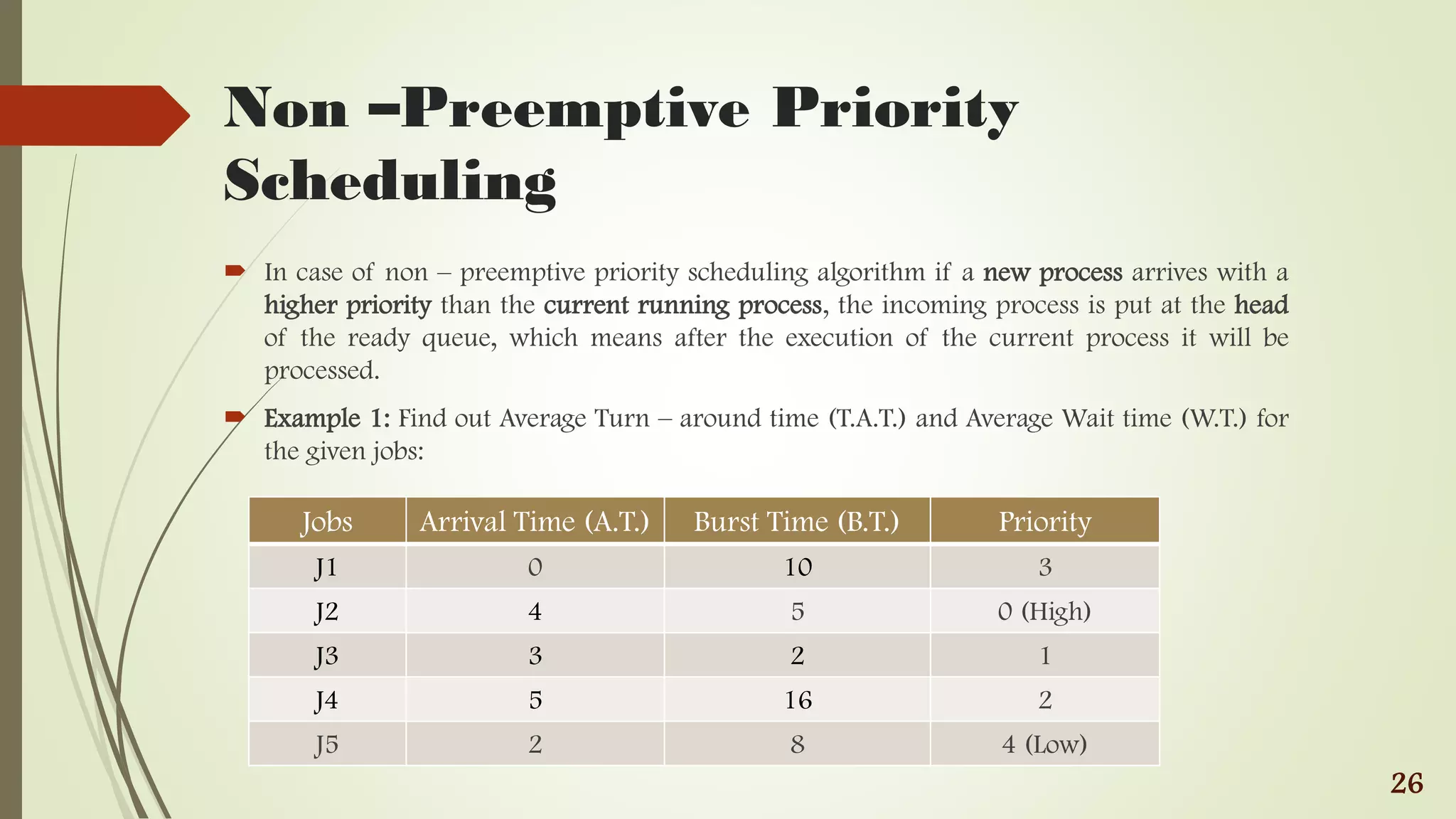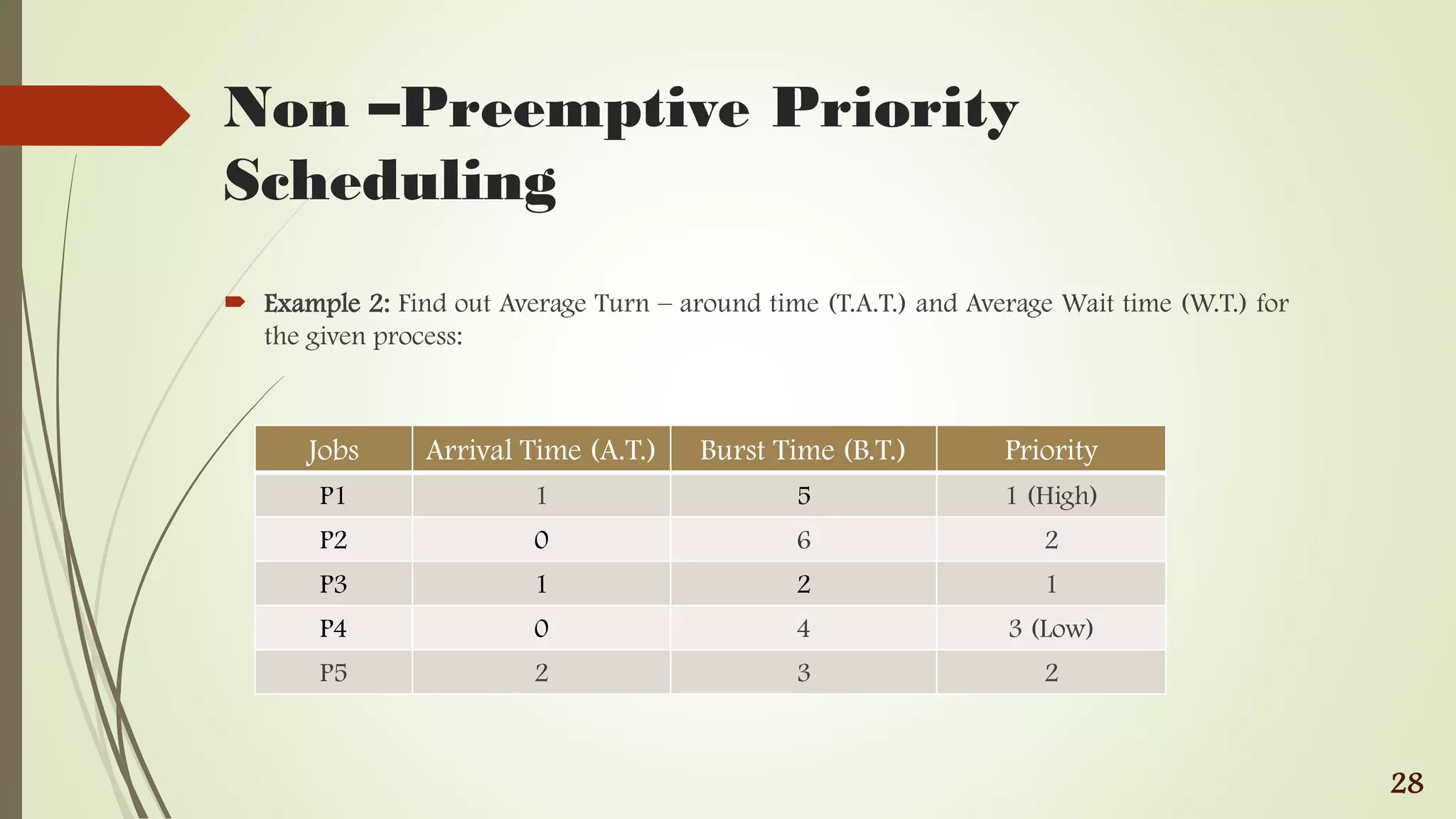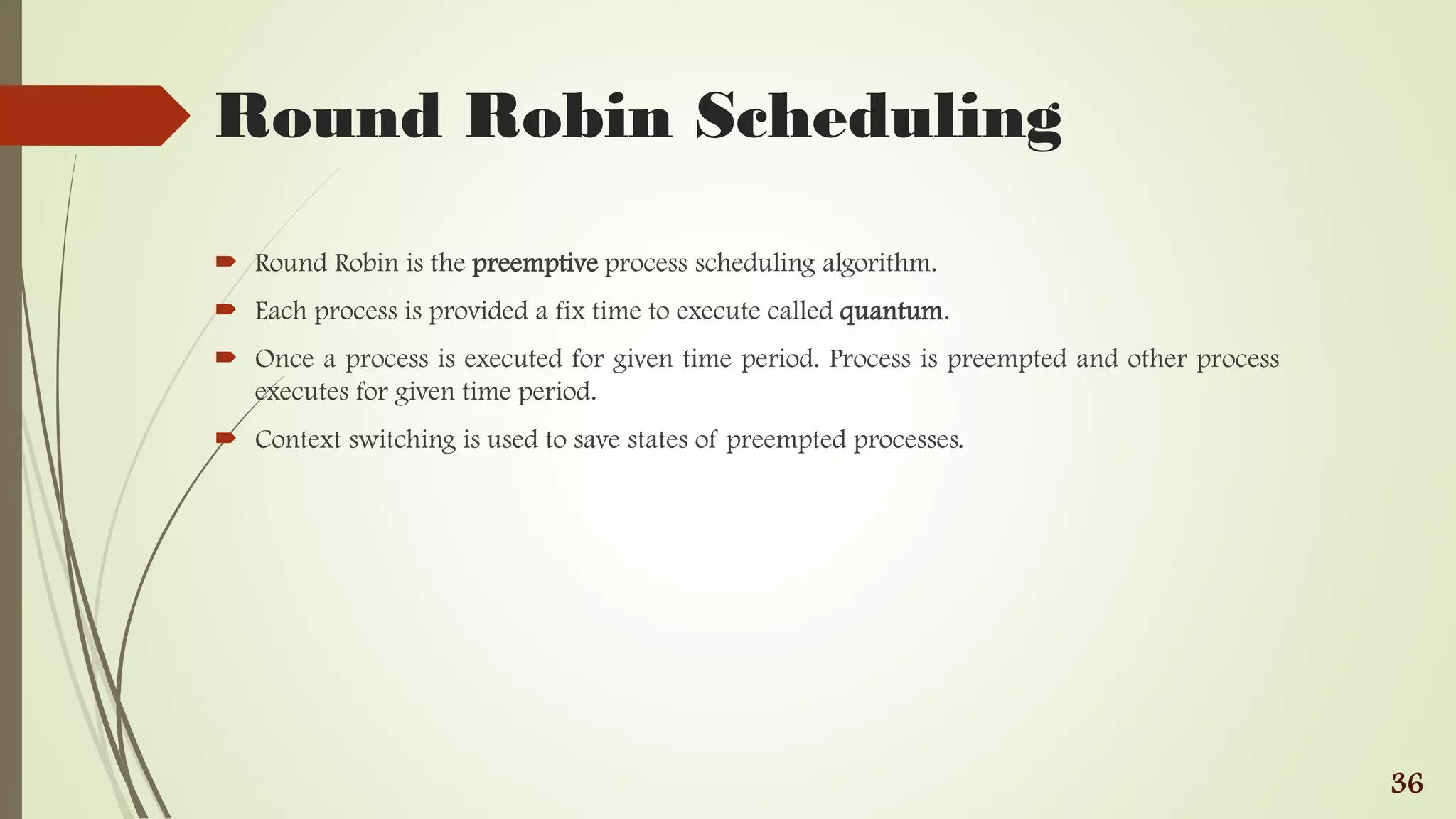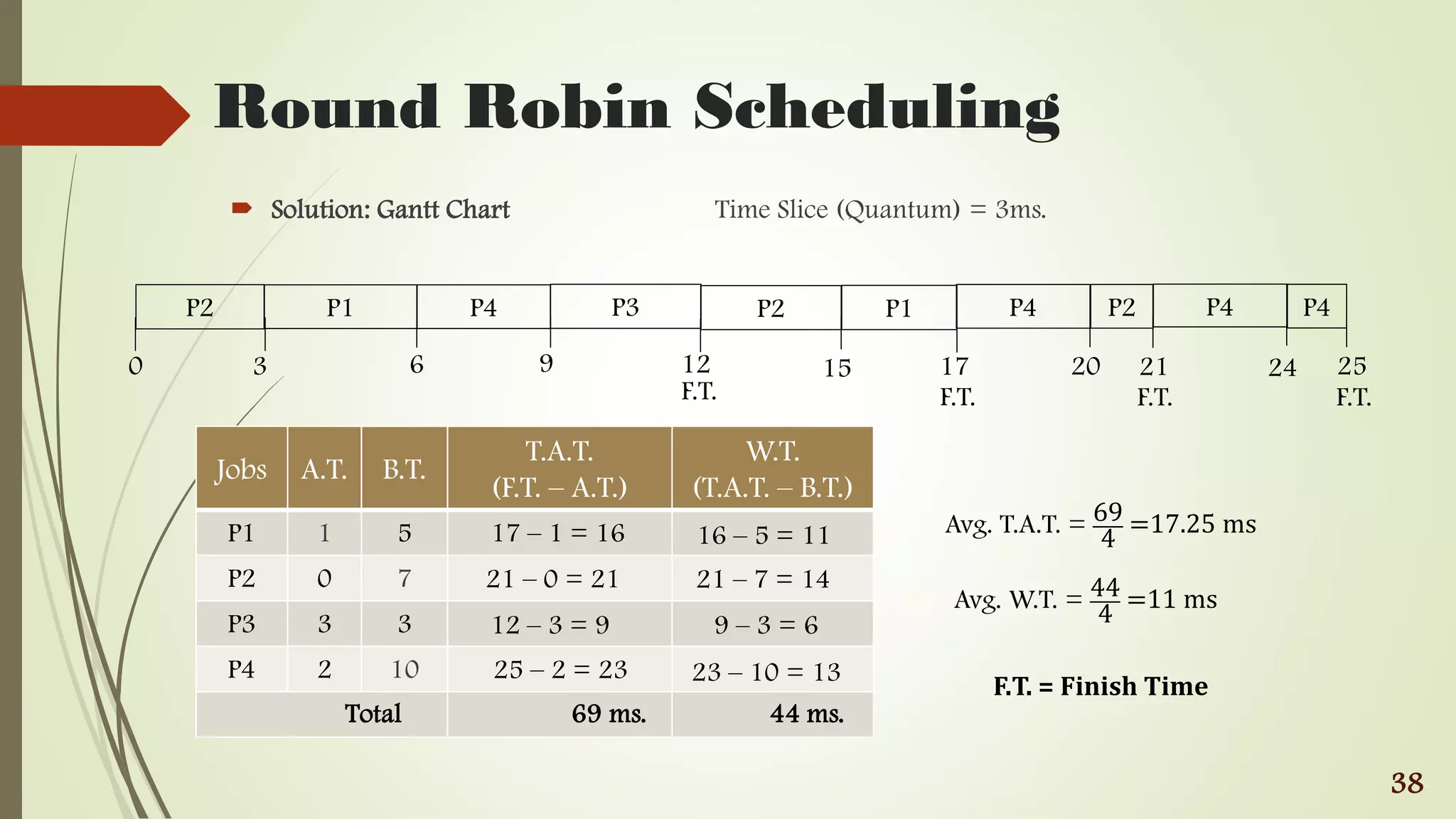The document discusses CPU scheduling, which involves allocating CPU resources to processes in a way that maximizes efficiency, speed, and fairness. It categorizes CPU scheduling into non-preemptive and preemptive types, and details various scheduling algorithms such as First Come First Serve (FCFS), Shortest Job First (SJF), and priority scheduling. Additionally, it outlines scheduling criteria including CPU utilization, throughput, turnaround time, and waiting time, providing examples to demonstrate average turnaround and wait times.
